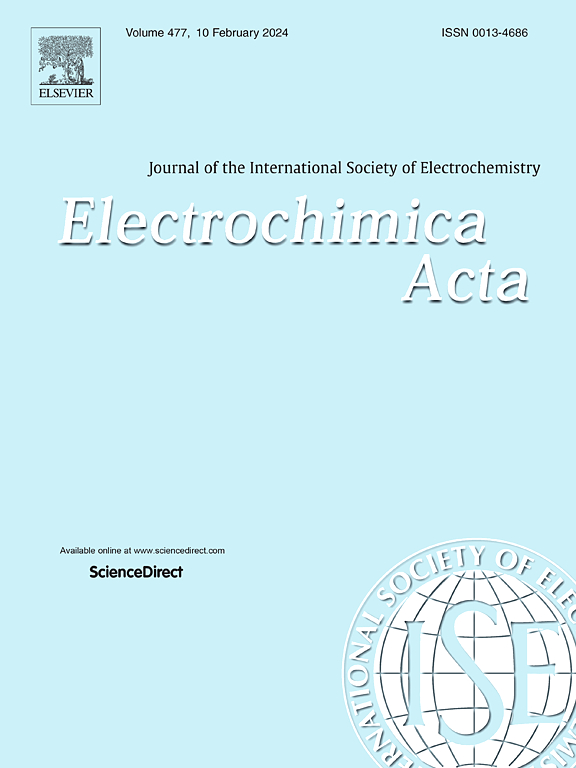Effects of CeCl3 on the Nickel Electrodeposition Behavior and Microstructure
IF 5.5
3区 材料科学
Q1 ELECTROCHEMISTRY
引用次数: 0
Abstract
This study is based on an industrial electrolyte system provided by a specific company and systematically investigates the regulatory mechanisms of the rare earth element cerium on the crystallization behavior of nickel electroplating and the resulting coating performance. The aim is to improve the theory of nickel electrocrystallization in industrial electrolytes, prepare electrolytic nickel plates with specific microstructures and properties, and overcome the common key technologies in the short-process direct rolling process of nickel plates. The multifaceted regulatory influence of cerium on the nickel electroplating process is examined in detail, encompassing electrochemical reaction kinetics, the structural evolution of the deposited layer, and elemental distribution. A comprehensive regulatory pathway is thus established. The findings reveal that the incorporation of 0.5 g/L CeCl3 significantly reduces charge transfer resistance, accelerates the reduction kinetics of Ni2+, and enhances nucleation rate and density, thereby improving the uniformity and compactness of the deposited layers. Although Ce3+ does not alter the fundamental nucleation mechanism, it effectively modulates crystallographic orientation and promotes the synergistic growth of crystalline planes. XRD, TEM, and XPS analyses indicate that Ce exists in the stable form of Ce10OS14, mainly distributed at the grain boundaries, which is beneficial for enhancing the performance of the deposited layer. EBSD results further confirm that cerium facilitates grain refinement and increases the proportion of high-angle grain boundaries. However, excessive CeCl3 addition (1.5 g/L) leads to pronounced adsorption effects, resulting in grain coarsening and diminished coating quality.

CeCl3对镍电沉积行为和显微组织的影响
本研究以某公司提供的工业电解液体系为基础,系统研究稀土元素铈对电镀镍结晶行为及镀层性能的调控机制。旨在完善工业电解液中镍电结晶理论,制备具有特定组织和性能的电解镍板,克服镍板短程直轧工艺中常见的关键技术。详细研究了铈对镍电镀过程的多方面调节影响,包括电化学反应动力学、沉积层的结构演变和元素分布。从而建立了一条全面的监管途径。结果表明,0.5 g/L CeCl3的加入显著降低了电荷传递阻力,加速了Ni2+的还原动力学,提高了成核速率和密度,从而改善了镀层的均匀性和致密性。虽然Ce3+没有改变基本的成核机制,但它有效地调节了晶体取向,促进了晶面的协同生长。XRD、TEM和XPS分析表明,Ce以Ce10OS14的稳定形式存在,主要分布在晶界处,有利于提高堆积层的性能。EBSD结果进一步证实了铈有利于晶粒细化,增加了高角度晶界的比例。但过量的CeCl3 (1.5 g/L)会导致吸附效果明显,导致晶粒变粗,涂层质量下降。
本文章由计算机程序翻译,如有差异,请以英文原文为准。
求助全文
约1分钟内获得全文
求助全文
来源期刊

Electrochimica Acta
工程技术-电化学
CiteScore
11.30
自引率
6.10%
发文量
1634
审稿时长
41 days
期刊介绍:
Electrochimica Acta is an international journal. It is intended for the publication of both original work and reviews in the field of electrochemistry. Electrochemistry should be interpreted to mean any of the research fields covered by the Divisions of the International Society of Electrochemistry listed below, as well as emerging scientific domains covered by ISE New Topics Committee.
 求助内容:
求助内容: 应助结果提醒方式:
应助结果提醒方式:


